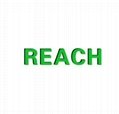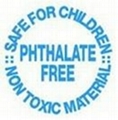| Model: | 15 |
|---|---|
| Brand: | GIG |
| Origin: | Made In China |
| Category: | Services / Others |
| Label: | toy total lead test , toy phthalates test , toy cpsia testing |
| Price: |
-
|
| Min. Order: | - |
Product Description
Six types of phthalates are currently banned for use in children's toys and certain child care articles in the amounts described on this page.
What are phthalates?
Phthalates are chemical plasticizers that are often used in the production of many types of plastics, certain inks, paints, and other products.
What is the ban on phthalates in children's toys and child care articles?
Congress has permanently banned three types of phthalates (DEHP, DBP, BBP)1 in any amount greater than 0.1 percent (computed for each phthalate, individually) in (1) children's toys and (2) certain child care articles.
A "children's toy" is defined as a consumer product designed or intended by the manufacturer for a child who is 12 years old or younger for use by the child when the child plays.
"Child care articles" are defined as consumer products that are designed or intended by the manufacturer for a child who is 3 years old or younger, to facilitate sleeping or feeding, or to help a child who is sucking or teething.
Congress has also banned (on an interim basis) three additional types of phthalates (DINP, DIDP, DnOP)2 in any amount greater than 0.1 percent (computed for each phthalate individually) in (1) a children's toy that can be placed in a child's mouth, and (2) child care articles.
Please note that the interim ban on DINP, DIDP, and DnOP only applies to children's toys that can be placed in a child's mouth. A toy that can be placed in a child's mouth is defined as any part of a toy that actually can be brought to the child's mouth and kept there so that it can be sucked or chewed on. If a toy or a part of the toy is smaller than 5 centimeters, it can be placed in the mouth.
Is third party testing and certification required for the ban on phthalates?
Yes. Third party testing and certification is required for the children's toys and child care articles that are described above. A full description of the covered products is included in the FAQs. The effective enforcement date is January 1, 2012 and applies to products manufactured after December 31, 2011. Remember that compliance with the underlying ban itself is currently required regardless of the date when testing and certification begins.
Does the ban on phthalates apply to the children's toys and child care articles as a whole, or to just the plasticized parts?
The ban on phthalates applies only to plasticized component parts (or other product parts which could conceivably contain phthalates) of children's toys and child care articles and only those parts of the product should be third party tested for phthalates. It is unnecessary to test and certify materials that are known not to contain phthalates or to certify that phthalates are absent from materials that are known not to contain phthalates.
Third party testing only the parts of the children's toy or child care article with plasticized component parts is designed to avoid dilution of the concentration of phthalates that can occur when the entire product is tested.
Does the ban on phthalates in children's toys and child care articles apply to inaccessible parts?
No. The ban does not apply to component parts that are inaccessible to a child. A part is "inaccessible" if it is has a sealed covering or casing and will not become physically exposed through reasonably foreseeable use and abuse of the product. Reasonable foreseeable use and abuse includes swallowing, mouthing, breaking or other children's activities, and the aging of the product.
Where can I find the law?
Section 108 of the Consumer Product Safety Improvement Act of 2008 (CPSIA) (pdf). Additional requirements related to the ban on phthalates were added in section 5 of H.R. 2715, Pub. L. No. 112-28 (August 12, 2011), which amended the CPSIA.
Resources
Frequently Asked Questions (FAQs)
Laboratory and Phthalate Test Methods FAQs
Statement of Policy: Testing of Component Parts with respect to Section 108 of the CPSIA, August 7, 2009 [PDF]
Draft Guidance of Children's Products covered by Section 108, February 12, 2009 [PDF]
16 CFR Part 1199: Children's Toys and Child Care Articles Containing Phthalates: Guidance on Inaccessible Component Parts
Notice of Requirements for Accreditation of Third Party Conformity Assessment Bodies to Assess Conformity with the Limits on Phthalates in Children's Toys and Child Care Articles [ PDF ]
Information on the Chronic Hazards Advisory Panel on Phthalates (CHAP)
Unless otherwise noted, all policy guidance provided here is in effect regardless of the date or title of the relevant documents.
1di-(2-ethylhexyl) phthalate (DEHP), dibutyl phthalate (DBP), or benzyl butyl phthalate (BBP).
2diisononyl phthalate (DINP), diisodecyl phthalate (DIDP), or di-n-octyl phthalate (DnOP).
This communication has been prepared for general informational purposes only and is based upon the facts and information presented. This communication does not, and is not intended to, constitute legal advice and has not been reviewed or approved by the Commission, and does not necessarily represent their views. Any views expressed in this communication may be changed or superseded by the Commission.
Lead is a known toxic substance that is frequently used in manufacturing of paints, plastics, dyes and ceramics. In today's marketplace, increased consumer concern about lead in products is driving retailers and manufacturers to re-evaluate both their quality assurance processes and products for the potential presence of lead and other chemicals of high concern. Recently, a number of products in the retail market have been identified as containing excessive levels of lead per federal requirements, resulting in costly recalls.
The limits on lead content in children's products have contributed to a successful effort by all federal health and safety agencies to lower the blood lead level in children. This page provides information for businesses seeking guidance on how to comply with the federal consumer product safety rules on lead.
What are the federal requirements limiting the total lead content in children's products?
Total Lead Content
With a few limited exceptions explained below, all children's products manufactured after August 14, 2011, must not contain more than 100 parts per million (ppm) of total lead content in accessible parts.
Lead in Paint and Similar Surface Coatings
All children's products, including toys, and some furniture, for adult and children, must not contain a concentration of lead greater than 0.009 percent (90 parts per million) in paint or any similar surface coatings. Household paint must also meet this requirement. Please see our webpage on lead in paint and similar surface coatings (under construction) for information on this requirement.
Is third party testing and certification required for the total lead content requirements?
The effective enforcement date for third party testing and certification is January 1, 2012 and applies to products manufactured after December 31, 2011. Remember that compliance with the underlying ban itself is currently required.
(For metal components in children's metal jewelry, the effective enforcement date for third party testing and certification was March 23, 2009 for products manufactured after that date.)
More Test Informations Contact us:
Mark Qi
Ningbo GIG Testing Co., Ltd..
Tel: +86 574 89201295 Fax: +86 574 89017298
E-mail:nbbotek_lab@126.com Skype:mark.qi2
Add:3/F,NO.555,Fuqiang Road,Yinzhou,Ningbo, China
Member Information
| Ningbo GIG Testing Co., Ltd | |
|---|---|
| Country/Region: | Zhe Jiang - China |
| Business Nature: | Services or Others |
| Phone: | 15168182703 |
| Contact: | Mark (sales manager) |
| Last Online: | 24 Aug, 2022 |
Related Products of this Company
-
toys&gifts&stationery EN71 test in
-
Germony PAHs nontoxic tesing
-
GIG Ningbo laboratory For Rousseau
-
ASTMF963 and CPSIA testing for usa toy
-
California Proposition 65 test for
-
US gift&toys ASTMF963 test
-
europe electronic ROHS nontoxic testing
-
ROHS 2.0 test
-
plastic Phthalates test
-
US total lead test for toys&gifts










